The Chancellor recently announced a number of new measures to help the economy through the winter months whilst the Coronavirus pandemic continues. Detailed below are some of the measures announced.
Job Support Scheme
1. What is it?
The Job Support Scheme is designed to protect viable jobs in businesses who are facing lower demand over the winter months due to Covid-19, to help keep their employees attached to the workforce. The company will continue to pay its employee for time worked, but the burden of hours not worked will be split between the employer and the Government (through wage support) and the employee (through a wage reduction), and the employee will keep their job.
The Government will pay a third of hours not worked up to a cap, with the employer also contributing a third. This will ensure employees earn a minimum of 77% of their normal wages, where the Government contribution has not been capped.
Employers using the Job Support Scheme will also be able to claim the Job Retention Bonus if they meet the eligibility criteria.
The scheme will open on 1 November 2020 and run for 6 months, until April 2021. Further guidance will be published shortly.
2. Who is eligible:
- Employers
All employers with a UK bank account and UK PAYE schemes can claim the grant. Neither the employer nor the employee needs to have previously used the Coronavirus Job Retention Scheme. Large businesses, however, will have to meet a financial assessment test, so the scheme is only available to those whose turnover is lower now than before as a result of difficulties from Covid-19. Small and medium enterprises (SMEs) are not affected by this test.
- Employees
This scheme is open to all employees on an employer’s payroll on or before 23 September 2020 and are in a viable job. This means a Real Time Information (RTI) submission notifying payment to that employee to HMRC must have been made on or before 23 September 2020.
In order to support viable jobs, for the first three months of the scheme the employee must work at least 33% of their usual hours. After 3 months, the Government will consider whether to increase this minimum hours threshold.
Employees will be able to cycle on and off the scheme and do not have to be working the same pattern each month, but each short-time working arrangement must cover a minimum period of seven days.
Employees cannot be made redundant or put on notice of redundancy during the period within which their employer is claiming the grant for that employee.
3. The Grant
For every hour not worked by the employee, both the Government and employer will pay a third each of the usual hourly wage for that employee. The Government contribution will be capped at £697.92 a month.
The grant payments will be made in arrears, therefore the employer will have to initially cover the Governments contribution. The grant will not cover Class 1 employer NICs or pension contributions, and these contributions will remain payable by the employer.
“Usual wages” calculations will follow a similar methodology as for the Coronavirus Job Retention Scheme. Employees who have previously been furloughed, will have their underlying usual pay and/or hours used to calculate usual wages, not the amount they were paid whilst on furlough.
Full details will be set out in guidance shortly.
Employers must pay employees their contracted wages for hours worked, and the Government and employer contributions for hours not worked. It is believed that employers cannot top up their employees’ wages above the two-thirds contribution to hours not worked at their own expense.
Grants can only be used as reimbursement for wage costs actually incurred.
4. Other Points to Note
The scheme will be open from 1 November 2020 to the end of April 2021 and employers will be able to make a claim online through Gov.uk from December 2020. They will be paid on a monthly basis.
The grants will be payable in arrears meaning that a claim can only be submitted in respect of a given pay period, after payment to the employee has been made and that payment has been reported to HMRC via an RTI return.
It is understood that HMRC will check claims submitted and payments may be withheld or need to be paid back if a claim is found to be fraudulent or based on incorrect information.
Employers must agree the new short-time working arrangements with their staff, make any changes to the employment contract by agreement, and notify the employee in writing. This
agreement must be made available to HMRC on request. It is believed that employees will be informed by HMRC directly of full details of the claims made in respect of them by their employer.
5. Example
Ned normally works 5 days a week and earns £350 a week. His company is suffering reduced sales due to coronavirus. Rather than making Ned redundant, the company puts him on the Job Support Scheme, working 2 days a week (40% of his usual hours).
Ned’s employer pays him £140 (£350 * 40%) for the days he works. For the time he is not working (3 days or 60%, worth £210 normally), he will also earn:
Employer contribution – (£210 * 1/3) £70
Government contribution – (£210 * 1/3) £70
Therefore, Ned will pe paid a further £140 representing 2/3 of his normal remaining salary. His total earnings will be £280, which represents 80% of his normal earnings.
The Government will give a grant worth £70 (1/3 of hours not worked, equivalent to 20% of his normal earnings) to Ned’s employer to support them in keeping his job.
| Weekly salary | £350 | £350 | £350 | £350 | £350 |
| Hours Employee Worked | 33% | 40% | 50% | 60% | 70% |
| Amount paid for hour worked | £115.50 | £140.00 | £175.00 | £210 | £245 |
| Hours Employee Not Working | 67% | 60% | 50% | 40% | 30% |
| Additional salary paid by employer | £77.39 | £70.00 | £57.75 | £46.20 | £34.65 |
| Government grant | £77.39 | £70.00 | £57.75 | £46.20 | £34.65 |
| Total Employee earnings | £270.27 | £280.00 | £290.50 | £302.40 | £314.30 |
| Employee Earnings (% of normal) | 77% | 80% | 83% | 86% | 90% |
| Gov’t Grant (% of normal wages) | 22% | 20% | 17% | 13% | 10% |
| Employer Cost (% normal wages) | 55% | 60% | 67% | 73% | 80% |
Self-Employment Income Support Scheme (SEISS)
The grant will be limited to self-employed individuals who are currently eligible for the SEISS and are actively continuing to trade but are facing reduced demand due to COVID-19. The scheme will last for 6 months, from November 2020 to April 2021. The extension will be in the form of two taxable grants. The first grant will cover a three-month period from the start of November until the end of January. This initial grant will cover 20%of average monthly trading profits, paid out in a single instalment covering 3 months’ worth of profits, and capped at £1,875 in total. The second grant will cover a three-month period from the start of February until the end of April. The government will review the level of the second grant and set this in due course.
VAT
Payment of March – June 2020 VAT liabilities
The government will give businesses which deferred VAT due in March to June 2020 the option to spread their payments over the financial year 2021-2022.
Rather than paying in full at the end of March 2021, businesses will be able to choose to make 11 equal instalments over 2021-22. All businesses which took advantage of the VAT deferral can use the New Payment Scheme. Businesses will need to opt in, but all are eligible. HMRC will put in place an opt-in process in early 2021.
Extending the temporary VAT reduced rate for hospitality and tourism
The Government is extending the temporary reduced rate of VAT (5%) from 12 January to 31 March 2021. This will continue to apply to supplies of food and non-alcoholic drinks from restaurants, pubs, bars, cafés and similar premises, supplies of hotel and holiday accommodation and admission to attractions across the UK.
Extension of Access to Finance Schemes
The government is extending four temporary loan schemes, to 30 November 2020 for new applications:
Bounce Back Loan Scheme (BBLS)
Loans are between £2,000 and £50,000, capped at 25% of turnover, with a 100% government guarantee to the lender to provide them with the confidence they need to support the smallest businesses. The borrower does not have to make any repayments for the first twelve months, with the government covering the first twelve months’ interest payments. Under the new Pay as you Grow options (see below), Bounce Back Loan borrowers will all be offered the choice of more time and greater flexibility for their repayments.
The government will give all businesses that borrowed under the BBLS the option to repay their loan over a period of up to ten years via the Pay As You Grow scheme. This will reduce their average monthly repayments on the loan by almost half. UK businesses will also have the option to move temporarily to interest-only payments for periods of up to six months (an option which they can use up to three times), or to pause their repayments entirely for up to six months (an option they can use once and only after having made six payments). These changes will provide greater flexibility to repay these loans over a longer period and in a way that better suits businesses’ individual circumstances.
Coronavirus Business Interruption Loan Scheme (CBILS)
This is open to UK-based businesses with turnover under £45 million. The scheme provides loans of up to £5 million with an 80% government guarantee to the lender, giving lenders the confidence to provide finance to SMEs. The government does not charge businesses for this guarantee and also covers the first twelve months of interest payments and fees.
The government intends to allow CBILS lenders to extend the term of a loan up to ten years, providing additional flexibility for UK-based SMEs who may otherwise be unable to repay their loans.
Coronavirus Large Business Interruption Loan Scheme (CLBILS)
Open to UK-based businesses with turnover above £45 million. The scheme provides loans of up to £200 million (to a maximum of 25% of turnover), with an 80% government guarantee to the lender, which is more generous than equivalent schemes in many other countries.
Future Fund
For businesses that cannot apply for one of the other loans.
Personal Tax Liabilities
Enhanced Time to Pay for Self-Assessment taxpayers
The government will give the self-employed and other taxpayers more time to pay taxes due in January 2021, building on the Self-Assessment deferral provided in July 2020. Taxpayers with up to £30,000 of Self-Assessment liabilities due will be able to use HMRC’s self-service Time to Pay facility to secure a plan to pay over an additional 12 months. This means that Self-Assessment liabilities due in July 2020 will not need to be paid in full until January 2022. Any Self-Assessment taxpayer not able to pay their tax bill on time, including those who cannot use the online service, can continue to use HMRC’s Time to Pay Self-Assessment helpline to agree a payment plan.
Get in touch or request a call back:
Call 0330 223 6400 or complete the form to make an enquiry or request a call back (* indicates a mandatory field).



